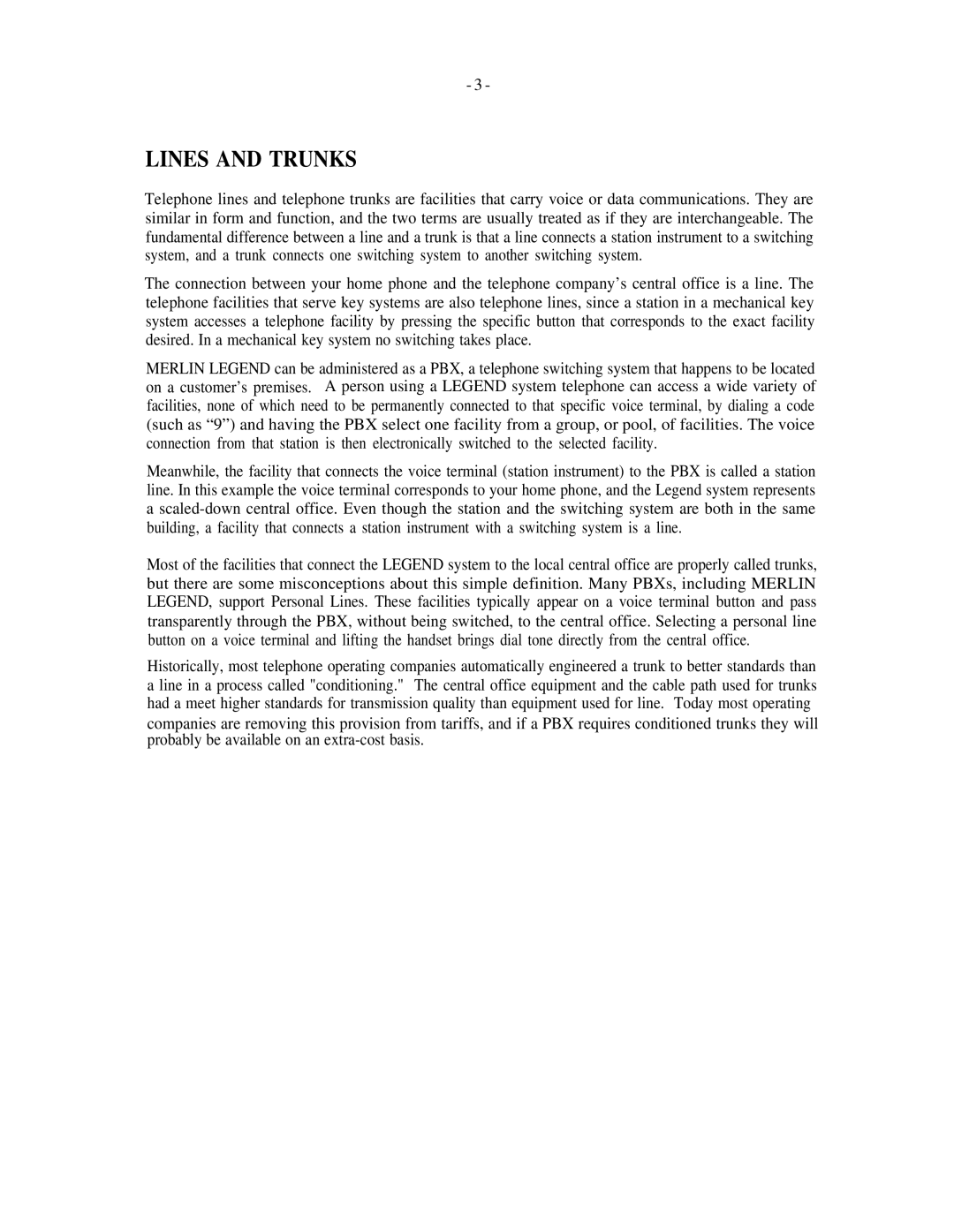- 3 -
LINES AND TRUNKS
Telephone lines and telephone trunks are facilities that carry voice or data communications. They are similar in form and function, and the two terms are usually treated as if they are interchangeable. The fundamental difference between a line and a trunk is that a line connects a station instrument to a switching system, and a trunk connects one switching system to another switching system.
The connection between your home phone and the telephone company’s central office is a line. The telephone facilities that serve key systems are also telephone lines, since a station in a mechanical key system accesses a telephone facility by pressing the specific button that corresponds to the exact facility desired. In a mechanical key system no switching takes place.
MERLIN LEGEND can be administered as a PBX, a telephone switching system that happens to be located on a customer’s premises. A person using a LEGEND system telephone can access a wide variety of facilities, none of which need to be permanently connected to that specific voice terminal, by dialing a code (such as “9”) and having the PBX select one facility from a group, or pool, of facilities. The voice connection from that station is then electronically switched to the selected facility.
Meanwhile, the facility that connects the voice terminal (station instrument) to the PBX is called a station line. In this example the voice terminal corresponds to your home phone, and the Legend system represents a
Most of the facilities that connect the LEGEND system to the local central office are properly called trunks, but there are some misconceptions about this simple definition. Many PBXs, including MERLIN LEGEND, support Personal Lines. These facilities typically appear on a voice terminal button and pass transparently through the PBX, without being switched, to the central office. Selecting a personal line button on a voice terminal and lifting the handset brings dial tone directly from the central office.
Historically, most telephone operating companies automatically engineered a trunk to better standards than a line in a process called "conditioning." The central office equipment and the cable path used for trunks had a meet higher standards for transmission quality than equipment used for line. Today most operating
companies are removing this provision from tariffs, and if a PBX requires conditioned trunks they will probably be available on an
